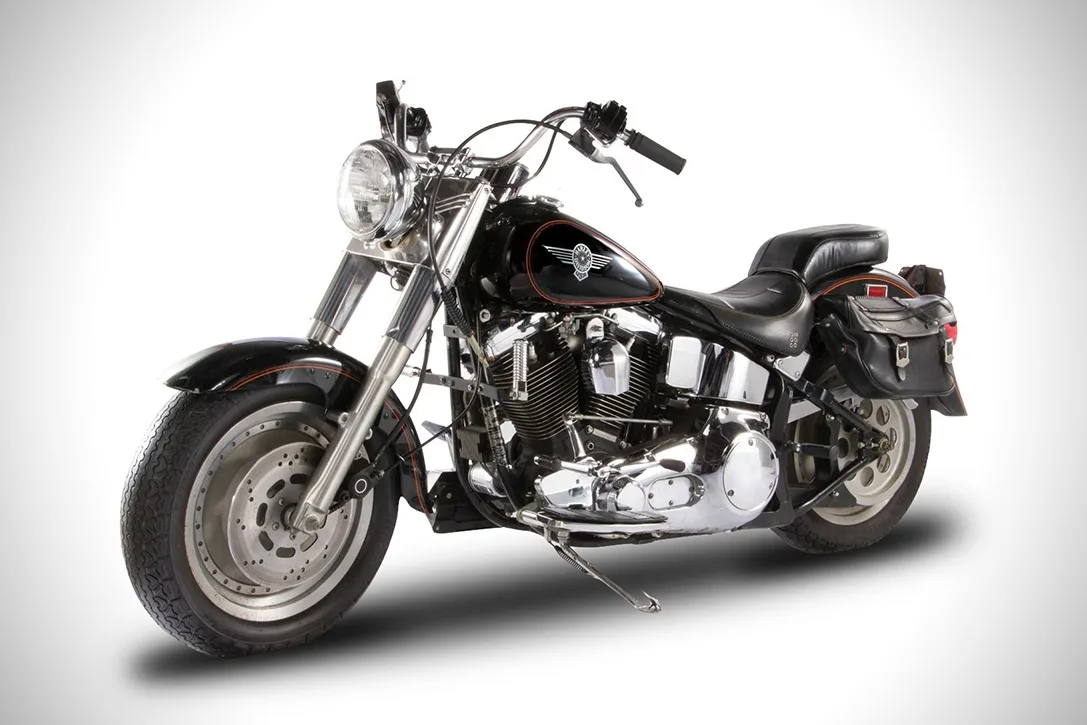When you think about the 90s, certain motorcycles immediately come to mind as icons of that era. The Honda CBR900RR Fireblade challenged the norms of sportbikes, while the Ducati 916 captured attention with its striking design. You’ve got the Yamaha YZF-R1 and Kawasaki Ninja ZX-11 pushing boundaries in speed and performance. Then there’s the Harley-Davidson Fat Boy, embodying classic American style. But what about the BMW K1200RS and Suzuki GSX-R750? Each of these machines not only turned heads but also shaped the future of motorcycling in ways you might not expect.
1. Honda CBR900RR Fireblade
In the early 90s, when the motorcycle world was ready for a revolution, the Honda CBR900RR Fireblade emerged as a game-changer. You mightn’t realize it, but this bike redefined the sportbike category with its blend of power, agility, and groundbreaking technology.
Weighing in at just around 400 pounds, the Fireblade offered an unprecedented power-to-weight ratio, thanks to its lightweight aluminum frame and a potent 893cc inline-four engine.
You’ll appreciate how Honda focused on delivering a bike that felt alive, encouraging you to push your limits. The CBR900RR’s aerodynamic design, featuring a sleek fairing and a compact profile, not only looked stunning but also enhanced stability at high speeds.
With its responsive handling and linear power delivery, you could carve through corners with precision, feeling every twist of the throttle.
But it’s more than just specs; it’s about the freedom this bike represents. The Fireblade ignited a passion for riding that transcended mere mechanics, inviting you to experience the raw thrill of the open road.
When you ride the Honda CBR900RR Fireblade, you’re not just on a motorcycle; you’re part of a legacy that celebrates liberation and exhilaration.
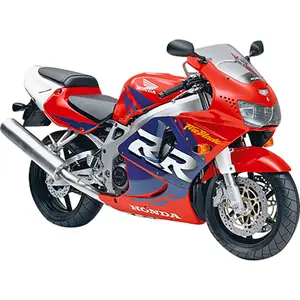
2. Ducati 916
The Ducati 916 stands as an icon of the 90s, capturing the hearts of riders and enthusiasts with its stunning design and exhilarating performance. This bike revolutionized sportbike aesthetics, combining aggressive lines with a distinctive trellis frame.
You can’t help but admire its curvaceous fairings, which not only enhance aerodynamics but also embody Italian craftsmanship.
Under the fairings, the 916 houses a powerful 904cc L-twin engine, delivering a heart-pounding 97 horsepower. You’ll feel the raw power as you twist the throttle, propelling you forward with remarkable acceleration.
The bike’s precision handling is equally impressive, thanks to its lightweight design and advanced suspension setup, allowing you to carve through corners with confidence.
The 916 isn’t just about performance; it represents a lifestyle of freedom and rebellion. Riding it, you embrace the spirit of the open road, the wind rushing past you, the roar of the engine igniting your soul.
With its racing pedigree, including multiple World Superbike championships, the Ducati 916 isn’t just a motorcycle; it’s a symbol of liberation and passion that defined an era.
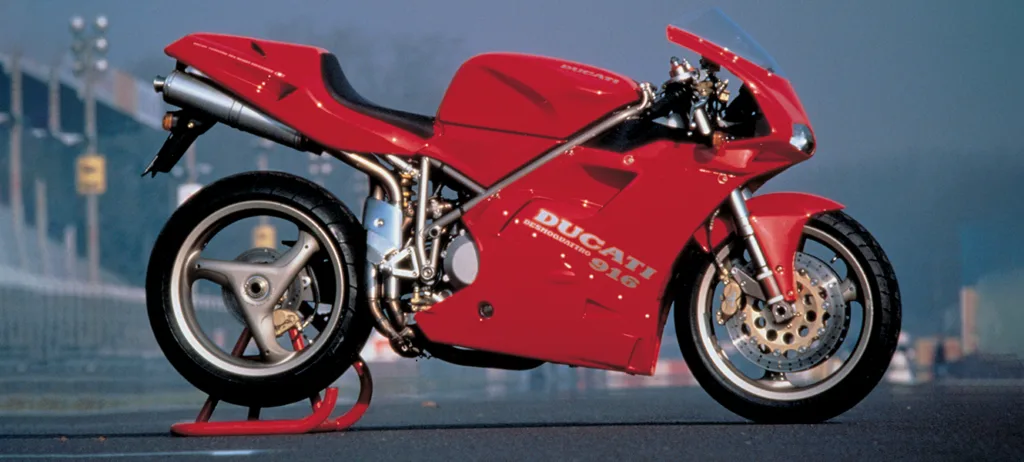
3. Yamaha YZF-R1
With the Ducati 916 setting a high standard for sportbikes in the 90s, the Yamaha YZF-R1 emerged as a game-changer that pushed the boundaries even further. Launched in 1998, this bike redefined what it meant to be a superbike, combining raw power with cutting-edge technology.
You’d feel the adrenaline surge as the 998cc inline-four engine roared to life, producing a staggering 150 horsepower and achieving top speeds that could reach 186 mph, showcasing its impressive speed performance. The R1’s lightweight aluminum Deltabox frame enhanced agility, allowing you to carve through corners with precision.
Yamaha’s focus on aerodynamics was evident, too; the sleek design not only looked stunning but also improved performance at high speeds. You couldn’t help but admire the aggressive stance and sharp lines that made it an instant head-turner. The R1 also introduced innovations like a slipper clutch, giving you confidence during aggressive downshifts.
Riding the YZF-R1 wasn’t just about speed; it was about liberation. Every twist of the throttle brought a sense of freedom, a connection between you and the road.
In a decade ruled by bold machines, the Yamaha YZF-R1 stood out, an embodiment of passion and performance that still resonates with riders today.
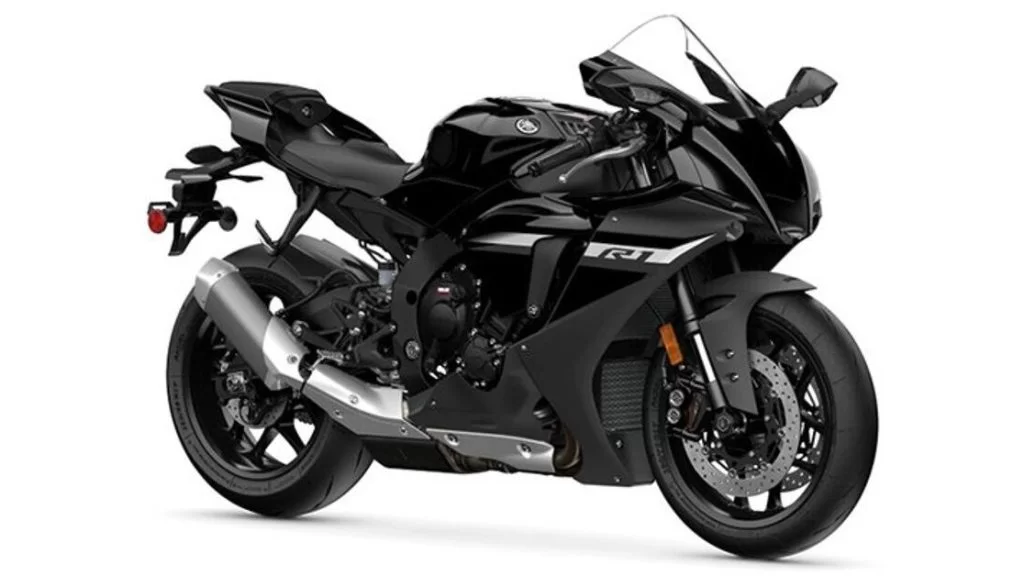
4. Kawasaki Ninja ZX-11
When you think of groundbreaking speed in the ’90s, the Kawasaki Ninja ZX-11 stands out as a true icon.
With its cutting-edge design and unmatched performance, it redefined what sportbikes could achieve, leaving a lasting impact on the motorcycle industry.
Let’s explore how this remarkable machine combined innovative features and raw power to carve its legacy.
Performance and Speed
Revving into the world of 90s motorcycles, the Kawasaki Ninja ZX-11 stands out as a benchmark for performance and speed. When you saddle up on this beast, you feel an immediate rush of adrenaline. Equipped with a powerful 1,052cc inline-four engine, it delivers a staggering 140 horsepower, propelling you from 0 to 60 mph in mere seconds.
The ZX-11’s aerodynamic design minimizes drag, allowing you to slice through the wind effortlessly. This era of motorcycles also saw the rise of other iconic models, such as the Yamaha YZF-R1, which dominated racetracks and set new benchmarks for performance.
The bike’s advanced liquid cooling system guarantees peak performance, even during intense rides, while the six-speed transmission offers smooth gear shifts, enhancing your control. The lightweight frame contributes to its agility, making cornering feel like second nature.
You’ll appreciate the confidence that comes from its responsive handling, whether you’re cruising on the highway or carving through twisty back roads.
With a top speed of over 175 mph, the ZX-11 was a game-changer, challenging the limits of what a motorcycle could achieve in the 90s. It not only catered to speed enthusiasts but also provided a liberating experience, allowing you to release your inner thrill-seeker on every ride.
This motorcycle isn’t just about speed; it’s about freedom.
Design Innovations
The Kawasaki Ninja ZX-11 isn’t just about raw power; it revolutionized motorcycle design in the 90s with innovations that enhanced both aesthetics and functionality.
When you look at its sleek, aerodynamic lines, you can see how Kawasaki pushed the envelope to reduce drag, allowing you to slice through the air effortlessly. The design integrates a full fairing, not just for looks, but to improve stability at high speeds, giving you confidence on the open road.
The ZX-11 also introduced advanced materials like lightweight aluminum in its frame, which made it more agile without sacrificing strength. This means you get a motorcycle that feels more responsive, allowing you to navigate tight corners with ease.
Its innovative LCD instrument panel provides essential data at a glance, ensuring you stay informed about your performance metrics without taking your eyes off the road.
Moreover, the comfortable riding position and adjustable windscreen cater to long-distance riders, blending sportiness with practicality.
It’s not just a motorcycle; it’s a statement of freedom, innovation, and an invitation to embrace the thrill of the ride. With the ZX-11, you’re not just riding; you’re experiencing a design marvel.
Legacy and Impact
Kawasaki’s Ninja ZX-11 didn’t just set new standards for motorcycle design; it left an indelible mark on the industry that continues to influence modern sport bikes. When you think about performance and engineering, the ZX-11 stands out as a benchmark.
It was the first production bike to breach the 190 mph barrier, redefining speed and power. This groundbreaking achievement sparked a competitive arms race among manufacturers, pushing them to innovate and create faster, more agile machines.
The ZX-11’s aerodynamic design and advanced technology, such as its liquid-cooled, inline-four engine, paved the way for the aerodynamic lines and high-performance components we see today. You can trace the lineage of many contemporary sport bikes back to the innovations introduced with the ZX-11.
Beyond its technical prowess, the ZX-11 cultivated a culture of freedom and adventure. Riders embraced its capabilities, fostering a community that values speed and exploration.
Its legacy is evident in how it inspired future models, encouraging you to chase not just the thrill of the ride but the liberation that comes with it. The Ninja ZX-11 remains a symbol of what’s possible when engineering meets passion.
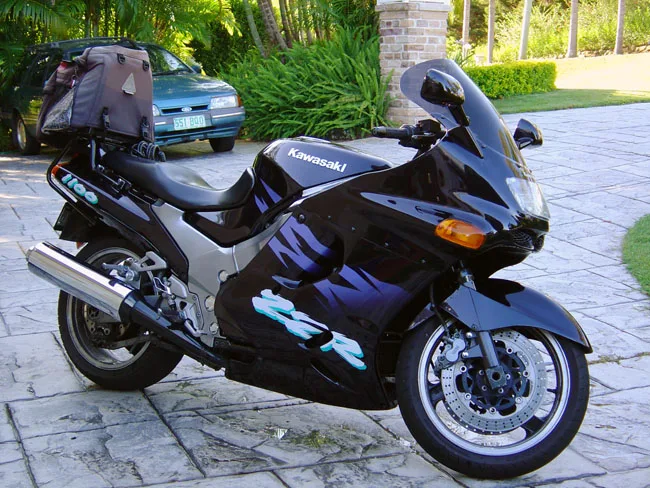
5. Harley-Davidson Fat Boy
When you think of the Harley-Davidson Fat Boy, you can’t help but appreciate its iconic design that combines muscular aesthetics with a touch of elegance.
Its cultural impact in the 90s reshaped the image of cruiser motorcycles, making it a symbol of freedom and rebellion.
Plus, with its formidable performance and engineering features, the Fat Boy set a new standard for what riders expected from heavyweight cruisers.
Iconic Design Elements
Few motorcycles have made as bold a statement as the Harley-Davidson Fat Boy. Its iconic design elements demand attention and evoke a sense of freedom that resonates with riders like you. The Fat Boy’s solid, wide stance and low-slung silhouette create an unmistakable presence on the road. You can’t help but admire the powerful, muscular frame that communicates strength and confidence.
The signature “fat” front and rear tires not only enhance the bike’s aggressive look but also provide exceptional stability and handling. You’ll appreciate the retro-style headlight and the minimalist fenders, which beautifully contrast the modern engineering beneath. The chrome details shine like jewels, reflecting the spirit of rebellion that Harley-Davidson embodies.
One of the most enchanting features is the distinctive “softail” design, which hides rear suspension components, ensuring a clean, classic feel. This clever engineering allows for a smooth ride without compromising the bike’s vintage aesthetic.
The Fat Boy’s color palette, often featuring rich blacks and metallics, further amplifies its rugged allure. Every element, from the exhaust to the handlebars, invites you to embrace the open road, making the Fat Boy not just a motorcycle, but a statement of liberation.
Cultural Impact and Influence
The Harley-Davidson Fat Boy isn’t just a motorcycle; it’s a cultural icon that has shaped the perception of motorcycle culture since its introduction. You can feel its presence in films, music, and art, where it symbolizes freedom, rebellion, and the open road.
This heavyweight cruiser has transcended mere transportation to become a statement of individuality and lifestyle.
Consider what the Fat Boy represents:
- Rebellion: It stands as a defiance against conformity, inviting you to break free from societal norms.
- Community: Riding a Fat Boy connects you with a tribe of like-minded individuals who share a passion for the journey.
- Timeless Style: Its design embodies a rugged elegance that appeals to both seasoned riders and newcomers alike.
When you hop on a Fat Boy, you’re not just riding; you’re participating in a legacy that celebrates the spirit of adventure.
Its influence stretches beyond the asphalt, sparking conversations about identity and purpose. In a world that often feels restrictive, the Fat Boy reminds you of the liberation found in the wind against your face and the open road ahead.
Embrace it, and let your ride reflect your soul.
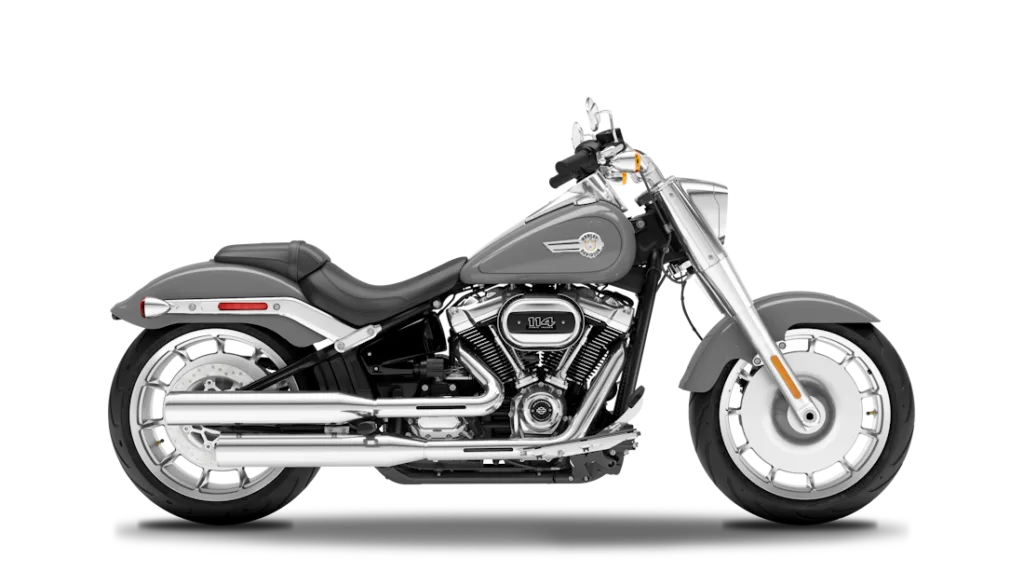
Performance and Engineering Features
Performance and engineering features define the Harley-Davidson Fat Boy as a heavyweight contender in the cruiser category. Its iconic design isn’t just for looks; it’s built on a solid foundation of engineering excellence.
With a powerful 1450cc V-twin engine, you’ll experience robust torque that propels you effortlessly down the open road. The 5-speed transmission guarantees smooth shifts, letting you glide through gears while feeling the rumble beneath you.
The Fat Boy’s frame is crafted for both stability and agility, featuring a low seat height that allows you to plant your feet firmly on the ground. This bike offers a comfortable riding position, perfect for long rides or short jaunts around town.
Its wide, solid wheels provide a planted feel, enhancing your confidence when cornering. Advanced suspension systems absorb road imperfections, making even bumpy rides enjoyable. The dual-disc front brakes deliver impressive stopping power, assuring safety without sacrificing style.
With its combination of raw power and thoughtful engineering, the Fat Boy invites you to embrace the road, embodying the spirit of freedom that every rider craves. It’s more than just a motorcycle; it’s a statement of liberation and individuality.
6. BMW K1200RS
With its sleek lines and innovative engineering, the BMW K1200RS emerged as a standout motorcycle in the 90s, enchanting riders who craved both sportiness and comfort.
You felt the thrill of its powerful 1,171cc inline-four engine, delivering a smooth ride and impressive acceleration that left competitors in the dust. This bike wasn’t just about speed; it revolutionized comfort with its ergonomic design, allowing you to tackle long distances without sacrificing your enjoyment.
Key features that defined the K1200RS include:
- Telelever Front Suspension: This setup enhanced stability and provided a unique riding experience, making cornering a breeze.
- Aerodynamic Fairing: The streamlined design reduced wind resistance, allowing you to slice through the air effortlessly.
- Advanced Braking System: Its ABS technology offered confidence and control, ensuring you could navigate through any situation.
When you hopped on the K1200RS, you weren’t just riding a motorcycle; you were embracing a lifestyle.
This bike symbolized freedom and adventure, embodying the spirit of the 90s with every twist of the throttle.
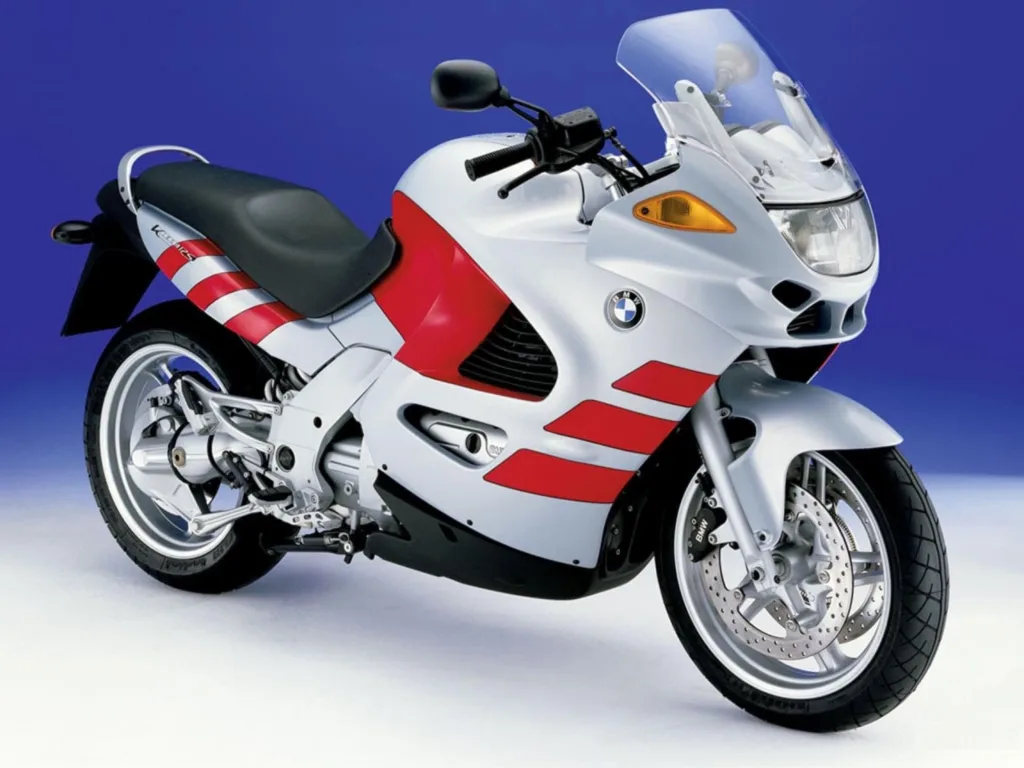
7. Suzuki GSX-R750
Few motorcycles can claim the same iconic status as the Suzuki GSX-R750, which redefined the sportbike category in the 90s. With its lightweight frame and powerful 749cc inline-four engine, this bike offered a thrilling balance of speed and agility. You’d feel the instant rush as you twisted the throttle, with a powerband that delivered smooth acceleration, making every ride an exhilarating experience.
The GSX-R750’s design wasn’t just about performance; it was a statement. Its sharp lines and aggressive stance caught eyes everywhere, embodying the rebellious spirit of the era. The innovative suspension system, featuring a fully adjustable front and rear, provided precise handling that inspired confidence on both the track and the road.
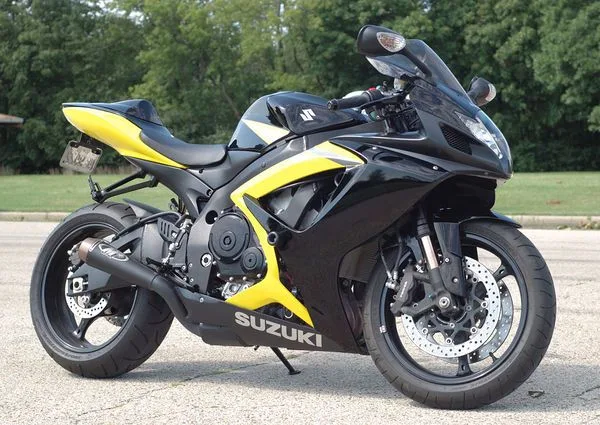
As you leaned into corners, the bike felt like an extension of your body, urging you to push harder and go faster. Its racing heritage shone through, with technology derived from Suzuki’s success on the racetrack.
Riding the GSX-R750 isn’t just about reaching your destination; it’s about the liberation of speed, the thrill of the ride, and a connection that only true enthusiasts can understand. This motorcycle isn’t just a mode of transport; it’s a lifestyle.

